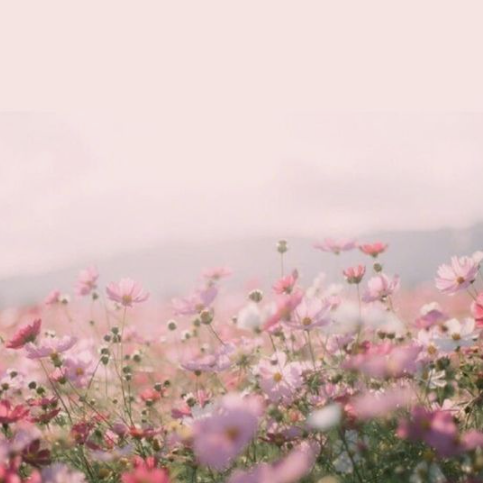신나는 온라인카지노에서의 즐거운 시간
2024-03-28
온라인카지노에서 게임을 즐기는 것은 누구에게나 새로운 도전이 될 것입니다. 혹시 쿠폰을 활용하여 특별한 혜택을 받아보고 싶다면, 정확한 정보 수집이 중요합니다. 이벤트와 프로모션도 놓치지 말고 즐겨봐야 합니다. 또한 안전한 환경과 보증이 되는 사이트를 선택하는 것이 가장 중요합니다. 온라인카지노에서는 다양한 게임을 즐길 수 있습니다. 바카라, 룰렛, 포커 등 다양한 옵션으로 여러분의 취향에 맞는 게임을 선택할 수 있습니다. 무엇보다도 쉽고 간편한 접속 방법으로 언제 어디서든 즐길 수 있다는 것이 큰 장점입니다. 이벤트와 프로모션은...
슬롯사이트: 현명한 선택을 위한 안내서
2024-03-27
슬롯사이트를 즐기는 많은 이용자들에게 있어 쿠폰, 이벤트, 프로모션, 보증은 중요한 요소입니다. 이 글에서는 이러한 추가 키워드들을 중심으로 현명한 슬롯사이트 선택에 대해 다뤄보고자 합니다. 최근 온라인 카지노 시장은 빠르게 성장하고 있는 추세입니다. 이에 따라 다양한 슬롯사이트가 등장하고 있는데, 이 중에서 신뢰할 만한 사이트를 골라내는 것은 매우 중요합니다. 슬롯사이트를 선택할 때 가장 먼저 확인해야 하는 것이 바로 보증입니다. 보증이 없는 사이트는 사용자들에게 불안감을 안겨줄 수 있으니 꼭 확인해야 합니다. 쿠폰과 이벤트는 많은...
슬롯사이트 이용 전 필수 확인사항
2024-03-13
현대 사회에서는 온라인 카지노가 매우 인기를 끌고 있습니다. 그 중에서도 특히 슬롯사이트는 많은 이용자들에게 사랑을 받고 있는데요. 이번 글에서는 슬롯사이트에 대해 자세히 알아보겠습니다. 슬롯사이트란? 슬롯사이트는 온라인 카지노에서 제공되는 게임 중 하나로, 다양한 종류의 슬롯머신 게임을 즐길 슬롯사이트 수 있는 웹사이트를 말합니다. 이용자들은 간단한 클릭만으로 다양한 테마의 슬롯머신을 즐길 수 있어 매우 편리합니다. 슬롯사이트의 장점 다양한 게임 선택: 슬롯사이트에서는 수백 가지의 다양한 슬롯머신 게임을 즐길 수 있습니다. 24/7 서비스: 온라인 카지노의...
로또번호추출기: 당신의 운명을 바꿀 수 있는 숫자의 마법
2024-03-02
프리또: 현대 로또 번호 추출의 혁신 로또 번호를 선택하는 것은 단순한 운이 아닙니다. 프리또는 이 과정을 과학적인 접근으로 변화시켰습니다. 빅데이터와 AI 기술을 결합하여, 사용자들에게 최적화된 번호를 제안하는 로또번호추출기는 단순한 예측을 넘어서, 과거 데이터를 분석하여 미래의 당첨 가능성을 극대화합니다. 이는 로또 애호가들에게 높은 관심을 받으며, 과학과 행운의 만남을 제공하고 있습니다. 로또 645: 당신의 행운을 위한 숫자 추적 로또 645는 매주 수백만의 사람들의 꿈을 담아 숫자를 추첨합니다. 프리또의 로또번호추출기는 이 꿈을 현실로...
안전놀이터: 플레이의 새로운 기준, 이박사와 함께하세요!
2024-02-13
안전놀이터 – 탁월한 선택의 시작 안전놀이터는 온라인 레저 활동을 위한 최고의 선택지입니다. 이박사 플랫폼은 사용자들에게 검증된 놀이터를 제공, 고품질의 레저 경험을 약속합니다. 여기서는 사용자의 안전이 최우선이며, 모든 놀이터는 엄격한 기준과 절차를 거쳐 선정됩니다. 이 플랫폼은 사용자에게 믿을 수 있는 정보와 함께, 다양한 업체들을 소개하여 선택의 폭을 넓혀줍니다. 이박사 – 신뢰의 중심 이박사 플랫폼은 사용자들에게 안전하고 신뢰할 수 있는 놀이터를 추천합니다. 여기에는 빅데이터 기반의 분석을 통해 가장 인기 있는 업체들의 순위를...
여성고소득알바로 당신의 경력을 업그레이드하세요!
2024-02-11
미수다 커뮤니티: 여성고소득알바의 새로운 지평 여성고소득알바 시장이 확장됨에 따라, 미수다 커뮤니티는 이 분야에서 독보적인 위치를 차지하고 있습니다. 미수다는 여성들이 고소득 알바를 찾고, 정보를 교류할 수 있는 공간으로서, 다양한 업종과 지역에서의 일자리 정보를 제공합니다. 이 곳에서는 급여, 근무 조건, 업무 환경에 대한 투명한 정보 공유가 이루어져, 여성들이 보다 합리적인 선택을 할 수 있도록 돕습니다. 여성고소득알바: 급여와 취업 조건 여성고소득알바는 단순히 높은 급여만을 의미하지 않습니다. 이는 더 나은 근무 조건, 유연한 근무...
토토친구: 빅데이터로 안전한 토토사이트 추천의 선두주자
2024-01-25
토토친구 플랫폼 소개 토토친구는 사용자들에게 신뢰할 수 있는 토토사이트와 안전놀이터를 추천하는 플랫폼입니다. 수많은 사이트 중에서도 최고의 보증업체만을 선별하여 추천하며, 이는 빅데이터 분석과 철저한 검증 과정을 통해 이루어집니다. 토토친구는 사용자들이 쉽고 안전하게 베팅을 즐길 수 있도록 돕습니다. 토토친구에서는 다양한 업체 정보를 제공하며, 이는 인기업체와 추천업체, 보증업체 등으로 구분되어 있습니다. 사용자들은 자신의 필요에 맞는 업체를 쉽게 찾아볼 수 있으며, 각 업체별로 제공되는 이벤트, 쿠폰, 프로모션 정보도 확인할 수 있습니다. 토토사이트 순위 및...
안전놀이터 이용자를 위한 최고의 선택 가이드
2024-01-24
안전놀이터의 이해와 카지노친구의 역할 안전놀이터는 온라인 베팅 및 카지노 게임을 즐길 수 있는 안전한 공간입니다. 카지노친구는 이러한 플랫폼들 중에서도 신뢰할 수 있는 업체를 선별하여 추천합니다. 이들 업체는 엄격한 빅데이터 분석과 검증 절차를 거쳐 사용자에게 제공됩니다. 보증업체 선정 기준과 이용방법 카지노친구가 보증하는 업체들은 엄격한 기준을 통과한 곳들입니다. 고객의 안전과 편의를 우선시하며, 투명한 운영과 빠른 지불 처리가 주요 기준입니다. 이용자는 카지노친구 웹사이트를 통해 쉽게 가입하고 다양한 이벤트와 프로모션을 이용할 수 있습니다. 인기...
파워볼 예측의 신세계: 베픽 커뮤니티와 함께하는 스마트한 예측 여정
2024-01-23
파워볼 예측과 베픽의 만남 파워볼 게임은 예측의 정확성이 승리의 열쇠입니다. 이를 위해 베픽 커뮤니티는 사용자들에게 심층적인 파워볼 예측 통계와 분석 도구를 제공합니다. 베픽은 다양한 데이터와 과거 결과를 분석하여, 사용자들이 보다 정확한 결정을 내릴 수 있도록 돕습니다. 이는 파워볼 게임에 참여하는 모든 이들에게 필수적인 리소스가 되었습니다. 베픽의 독특한 분석기 특징 베픽의 분석기는 사용자 친화적 인터페이스를 갖추고 있으며, 복잡한 데이터를 쉽고 이해하기 쉬운 형태로 변환합니다. 이 도구는 실시간으로 데이터를 업데이트하며, 사용자들이 최신...
스웨디시 마사지: 휴식과 치유의 완벽한 조화
2024-01-01
스웨디시 마사지는 근육 긴장을 완화하고 전반적인 이완을 촉진하는 인기 있는 마사지 형태입니다. 이 기사에서는 스웨디시 마사지의 정의, 효과, 가격 비교, 그리고 이 마사지를 제공하는 최고의 업체들을 탐색해 보겠습니다. 스웨디시 마사지란 무엇인가? 스웨디시 마사지는 부드럽고 흐르는 듯한 스트로크 기법을 사용하여 신체의 긴장을 풀어주고 혈액 순환을 개선하는 마사지 방법입니다. 이 마사지는 신체적, 정신적 이완뿐만 아니라 건강 개선에도 도움을 줍니다. 스웨디시 마사지의 효과 스웨디시 마사지는 스트레스 감소, 근육 통증 완화, 그리고 개선된 수면...
올림푸스카지노: 카지노친구를 통한 최고의 선택!
2023-12-24
최근, 카지노 시장에서 빛나는 별, 바로 올림푸스카지노입니다. 그렇다면 왜 이렇게 많은 사람들이 올림푸스카지노를 추천하는 걸까요? 빅데이터로 본 올림푸스카지노의 인기 빅데이터 분석을 통해, 올림푸스카지노는 사용자들로부터 높은 만족도와 활동량을 보이고 있습니다. 검증된 업체 정보 카지노친구에서는 올림푸스카지노의 각종 정보를 제공하고 있습니다. 여기에는 업체 정보, 이벤트, 쿠폰, 프로모션 정보도 포함됩니다. 인기 업체, 추천 업체 및 보증 업체 목록 카지노친구에서는 빅데이터 분석을 통해 사용자들이 가장 선호하는 업체와 추천 업체, 그리고 보증 업체의 목록을 제공하고 있습니다....
카지노사이트 선택 가이드: 순위와 추천으로 완벽한 카지노 선택하기!
2023-12-19
카지노사이트 순위와 추천 카지노를 선택할 때, 가장 신뢰할 수 있는 정보는 순위와 추천입니다. 빅데이터를 통한 객관적인 분석으로 가장 인기있고 안전한 카지노사이트를 알려드립니다. 카지노친구의 빅데이터 검증 데이터는 거짓말을 하지 않습니다. 수많은 데이터와 사용자의 경험을 분석하여 최상의 카지노사이트를 검증합니다. 카지노친구와 함께라면 더 이상 걱정 없이 카지노의 세계를 즐길 수 있습니다. 업체정보 각 카지노사이트의 상세한 업체정보, 프로모션, 이벤트 등을 제공하여 사용자가 정보에 기반한 선택을 할 수 있도록 돕습니다. 다양한 이벤트와 쿠폰도 놓치지 마세요....
카지노사이트: 온카의 세계로의 초대
2023-12-18
온카: 카지노사이트의 신뢰할 수 있는 선택 온카는 사용자들에게 카지노사이트의 다양한 순위와 추천 목록을 제공합니다. 이 플랫폼은 빅데이터 분석과 철저한 검증 과정을 통해 최고의 업체 정보를 제공하며, 사용자의 경험을 최우선으로 고려합니다. 카지노사이트 순위와 추천의 기준 온카에서 제공하는 카지노사이트 순위는 사용자 리뷰, 게임의 다양성, 보안성 등 여러 기준을 통합하여 결정됩니다. 이를 통해 사용자는 자신의 요구에 가장 잘 맞는 사이트를 쉽게 찾을 수 있습니다. 보증업체와 검증업체: 안전한 베팅의 핵심 보증업체와 검증업체 목록은 온카의...
개인돈대출: 이지론을 통한 현명한 금융 선택
2023-12-18
개인돈대출은 금융의 새로운 패러다임입니다. 이지론은 이 혁신적인 서비스를 제공하여 당신의 금융생활을 한 단계 끌어올립니다. 이지론을 통한 개인돈대출은 정의부터 시작해야 합니다. 간단히 말해, 이는 개인 간의 자금 대여 및 대출 서비스를 의미합니다. 이지론의 전문가들은 이 과정을 간소화하고, 사용자에게 최적화된 조건을 제공합니다. 대출상담과 맞춤 비교를 통해, 이지론은 각 고객의 상황에 맞는 최적의 대출 옵션을 제시합니다. 이 과정에서 빅데이터와 AI 기술이 활용되어, 최저금리를 실시간으로 제공합니다. 대부중개 플랫폼으로서의 이지론은 사용하기 쉬우며, 누구나 접근할 수...
복권 분석의 새 시대! 베픽 파워볼 분석기로 당신도 예측의 달인
2023-12-12
복권은 항상 행운과 확률의 세계였습니다. 그러나 이제 베픽 파워볼 분석기가 그 판도를 바꾸고 있습니다. 이 도구는 빅데이터와 AI를 활용하여 파워볼 게임의 패턴을 분석하고 미래의 당첨번호를 예측합니다. 복잡한 알고리즘과 통계학적 방법론을 사용하여 사용자에게 최적의 예측을 제공하며, 이 모든 것이 완벽하게 무료입니다! 어떻게 사용하나요? 베픽 파워볼 분석기의 사용 방법은 매우 간단합니다. 웹사이트에 접속하고, 파워볼 게임을 선택한 다음, 최근 게임의 결과를 입력하거나 업로드합니다. 그러면 분석기는 이 데이터를 기반으로 다음 게임의 예측번호를 제공합니다. 모든...
















